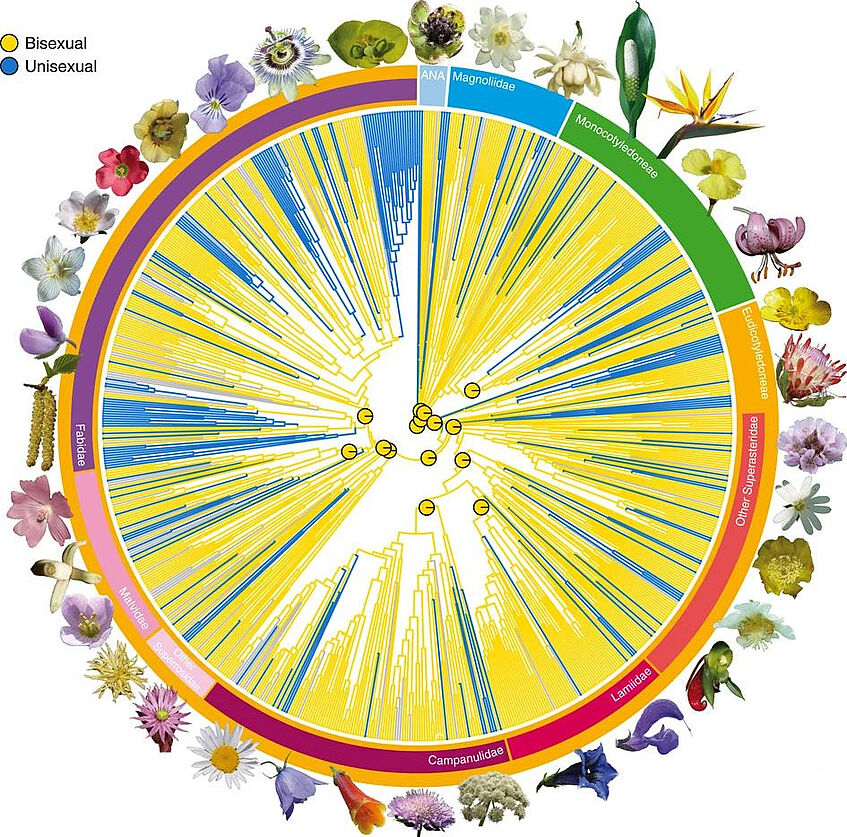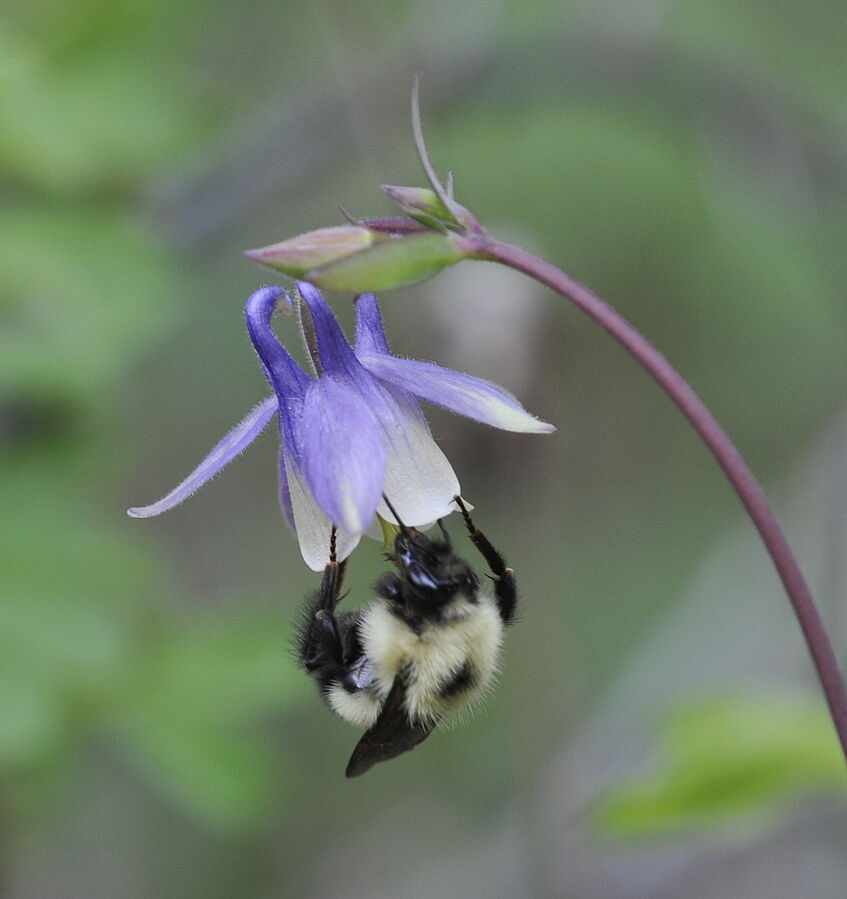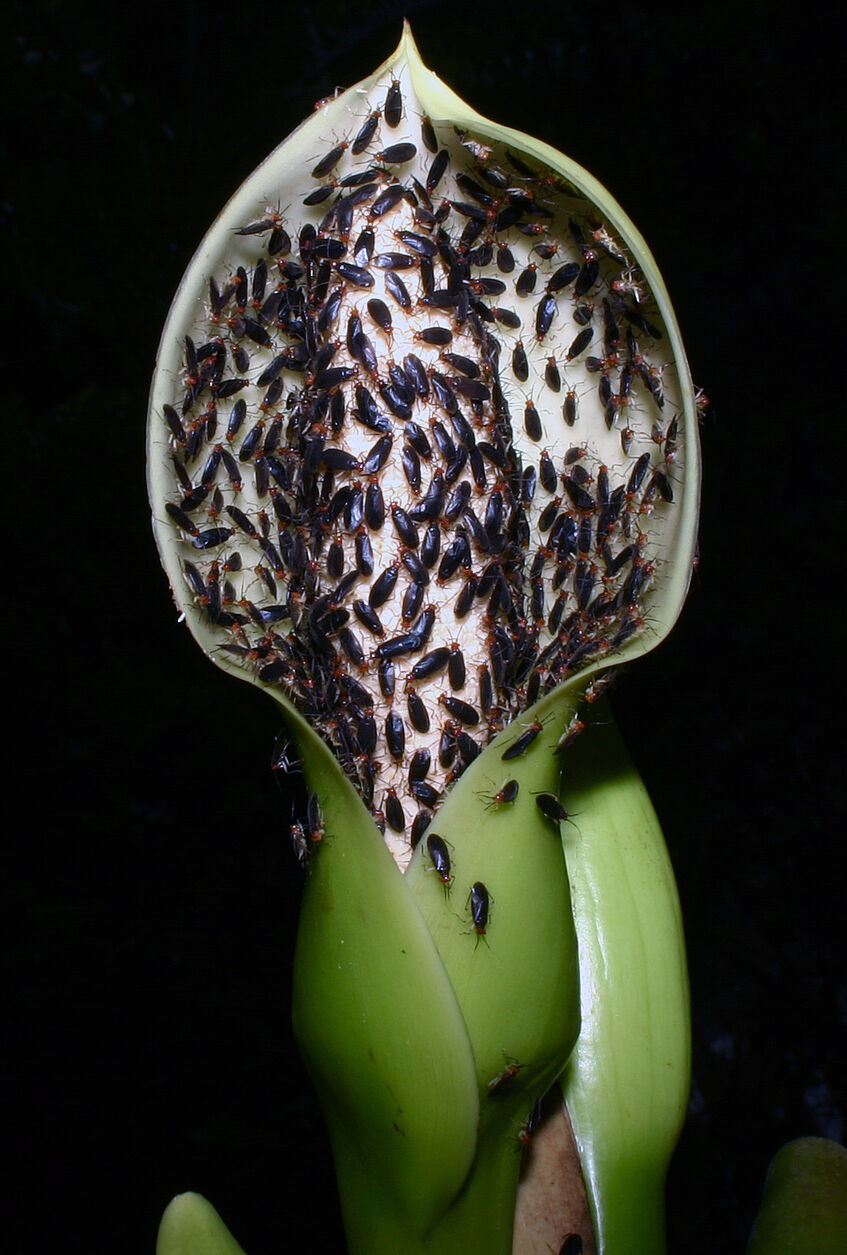Diversity and evolution of flowers
The flowering plants represent the most significant radiation in the plant kingdom and they dominate most terrestrial ecosystems. Their success is intimately connected with the diversification of floral structure and floral biology. The study of flowers is therefore of fundamental significance for a more comprehensive understanding of the diversity and evolution of the group. In our current research, we integrate results from the fields of comparative morphology, floral development, palaeobotany, and phylogenetics in order to explain the manifold forms and functions of flowers in various taxonomic groups as well as the evolutionary history of the flowering plants as a whole.
Evolution and Systematics

Ancestral state reconstruction shows that bisexual flowers (yellow) are ancestral and that unisexual flowers (blue) evolved many times independently in angiosperms (© Sauquet et al. 2017, Nature Communications)
Evolution and Systematics
Phylogenetic analyses allow us to assess evolutionary relatedness among taxa based on comparative molecular and structural data. The resulting phylogenetic hypotheses are important tools that help us to better understand the diversity and evolutionary history of particular structural features and character complexes that we observe in our study objects.
Pollination biology

Bombus impatiens pollinating Aquilegia brevistyla (Ranunculaceae); Black Hills National Forest (South Dakota, USA) (© Michael Münch)
Pollination biology
Pollination biology is the field of botany that deals with the pollination (tranfer of pollen to the stigma) and fertilisation of the flowers of "flowering plants" (gymno- and angiosperms) by abiotic (wind, water) and biotioc vectors (various groups of insects, vertebrates). The field dwas opened in 1793 by the epoch-making book entitled (in translation) "The uncovered secret of nature in the structure and fertilisation of flowers) by C. K. Sprengel. While wind- and water-pollinated flowers are inconspicuous and of simple architecture, in the animal-pollinated flowers an enormous diversity with sometimes bizarre specialisations has evolved. Insect pollination is found worldwide, whereas flower that are pollinated by vertebrates (birds, bats, non-flying mammals) are found only in the tropics.

An inflorescence of Syngonium hastiferum (Araceae) with hundreds of individuals of the pollinating plant bug Neella sp. nov.; La Gamba, Costa Rica (© Florian Etl)

Melipona costaricensis buzz-pollinating the flowers of Adelobotrys adscendens (Melastomataceae); La Gamba, Costa Rica (© Jürg Schönenberger)
Research projects
- eFLOWER
- Floral evolution in Ericales
- Gesneriaceae-Gattungen
- Modelling abiotic and biotic drivers of a plant radiation (Firnberg-Program Project T 1186-B)
- The Late Cretaceous Flora of South Bohemia (FWF-Project I 6402-B)
- X-ray computed tomography
- Floral development and 3D-pollination syndromes in Aquilegia (FWF-Project P 31101-B29) - finished
- Floral evolution and diversification in the light of morphospace analyses (FWF-Projekt P 25077-B16) - finished
- Pollinator shifts and floral Evolution in the Merianieae (Melastomataceae) (FWF-Projekt P 30669-B29) - finished
